Enzymes(酶)
Enzymes are very efficient and specific catalyst proteins which react with 1 or few types of substrates in biochemical reactions and are responsible for bringing about almost all of the chemical reactions in living organisms. Enzymes speed up reactions by providing an alternative reaction pathway of lower activation energy. Without enzymes, reactions take place at a rate far too slow for the pace of metabolism which means that they speed up the chemical reactions in living things.
There are 2 types of enzymes, ones that help join specific molecules together to form new molecules & others that help break specific molecules apart into separate molecules. Enzymes play many important roles ouside the cell as well. One of the best examples of this is the digestive system. For instance, it is enzymes in your digestive system that break food down in your digestive system break food down into small molecules that can be absorbed by the body. Some enzymes in your digestive system break down starch, some proteins and others break down fats. The enzymes used to digest our food are extra-cellular since they are located outside our cells & enzymes inside our cells are intra-cellular enzymes. Enzymes are used in ALL chemical reactions in living things; this includes respiration, photosynthesis, movement growth, getting rid of toxic chemicals in the liver and so on. Enzymes are proteins that must have the correct structure to be active. They are very easily affected by heat, pH and heavy metal ions.
Ribonucleoprotein enzyme catalytic activity is located in the protein part but for some the catalytic activity is in the RNA part. A catalyst is any substance which makes a chemical reaction go faster, without itself being changed. A catalyst can be used over and over again in a chemical reaction and does not get used up.
Enzymes lower the amount of activation energy needed by binding to the reactants of the reaction they catalyze, thus speed up the reaction and can process millions of molecules per second. Enzymes are typically large proteins with high molecular weight that permit reactions to go at conditions that the body can tolerate.
Enzyme nomenclature is based on what the enzyme reacts with & how it reacts along with the ending ase.
Enzymes must get over the activation energy hurdle.
Enzymes change how a reaction will proceed which reduces the activation energy and makes it faster. The more we increase the enzyme concentration the faster the reaction rate for non-catalyzed reactions. Enzymes that are catalyzed reactions also increase reaction rate at higher level of concentration but up to a certain point called Vmax which means that the enzyme has reached its maximum point. The reaction is limited by both the concentrations of the enzyme and substrate. Enzymes as catalysts take part in reactions which provide an alternative reaction pathway. Enzymes do not undergo permanent changes and remain unchanged at the end of the reaction. They only change the rate of reaction, not the position of the equilibrium.Enzymes as catalysts are highly selective by only catalysing specific reactions due to the shapes of the enzyme’s molecule.
Enzymes contain a globular protein part called apoenzyme and a non-protein part named cofactor or prosthetic group or metal-ion-activator. Changes in temperature and pH have great influence on the intra- and intermolecular bonds that hold the protein part in their secondary and tertiary structures.
Examples of cofactors are 1. Prosthetic group that are permanently bound to the enzyme. 2. Activator group which are cations (positively charged metal ions) & temporarily bind to the active site of the enzyme. 3.Coenzymes, usually vitamins or made from vitamins which are not permanently bound to the enzyme molecule, but combine with the enzyme-substrate complex temporarily. Enzymes require the presence cofactors before their catalytic activity can be exerted. This entire active complex is referred to as the holoenzyme.
Without enzymes, our guts would take weeks to digest our food, our muscles, nerves and bones would not work properly and so on…
Main Enzyme category groups:
Oxidoreductases:
All enzymes that catalyse oxido-reductions belong in this class. The substrate oxidized is regarded as a hydrogen or electron donor. The classification is based on 'donor:acceptor oxidoreductase'. The common name is 'dehydrogenase', wherever this is possible; as an alternative, 'acceptor reductase' can be used. 'Oxidase' is used only where O2 is an acceptor. Classification is difficult in some cases, because of the lack of specificity towards the acceptor.
Transferases:
Transferases are enzymes that transfer a group, for example, the methyl group or a glycosyl group, from one compound (generally regarded as donor) to another compound (generally regarded as acceptor). The classification is based on the scheme 'donor:acceptor grouptransferase'. The common names are normally formed as 'acceptor grouptransferase' or 'donor grouptransferase'. In many cases, the donor is a cofactor (coenzyme) that carries the group to be transferred. The aminotransferases constitute a special case.
Hydrolases:
These enzymes catalyse the hydrolysis of various bonds. Some of these enzymes pose problems because they have a very wide specificity, and it is not easy to decide if two preparations described by different authors are the same, or if they should be listed under different entries. While the systematic name always includes 'hydrolase', the common name is, in most cases, formed by the name of the substrate with the suffix -ase. It is understood that the name of the substrate with this suffix, and no other indicator, means a hydrolytic enzyme. It should be noted that peptidases have recommended names rather than common names.
Lyases:
Lyases are enzymes that cleave C-C, C-O, C-N and other bonds by means other than by hydrolysis or oxidation. They differ from other enzymes in that two (or more) substrates are involved in one reaction direction, but there is one compound fewer in the other direction. When acting on the single substrate, a molecule is eliminated and this generates either a new double bond or a new ring. The systematic name is formed according to 'substrate group-lyase'. In common names, expressions like decarboxylase, aldolase, etc. are used. 'Dehydratase' is used for those enzymes that eliminate water. In cases where the reverse reaction is the more important, or the only one to be demonstrated, 'synthase' may be used in the name.
Ligases:
Ligases are enzymes that catalyse the joining of two molecules with concomitant hydrolysis of the diphosphate bond in ATP or a similar triphosphate. 'Ligase' is often used for the common name, but, in a few cases, 'synthase' or 'carboxylase' is used. 'Synthetase' may be used in place of 'synthase' for enzymes in this class.
Products for Enzymes
- 41701(11)
- Activating Transcription Factor(3)
- Adenylate Kinase(10)
- AHCY(3)
- Aldolase(9)
- Asparaginase(5)
- Aurora Kinase(18)
- Beta Lactamase(3)
- Calcium and Integrin Binding(2)
- Calcium/Calmodulin-Dependent Protein Kinase(4)
- Carbonic Anhydrase(49)
- Casein Kinase(36)
- Cathepsin(52)
- Chitinase(5)
- Creatin Kinases(9)
- Cyclin(7)
- Cyclin-Dependent Kinase(18)
- Cyclophilin(23)
- Deaminase(14)
- Decarboxylase(12)
- Dehydrogenase(96)
- Discoidin Domain Receptor Tyrosine Kinase(2)
- DNA Polymerase(4)
- EGF Receptor(3)
- Endonuclease(6)
- Enolase(10)
- Enterokinase(5)
- Epimerase(3)
- Esterase(15)
- FGF Receptors(12)
- FK506 Binding Protein(10)
- Fructosamine 3 Kinase(2)
- Galactosidase(5)
- Glucosidase(32)
- Gluteradoxin(7)
- Glycogen synthase kinase(2)
- Glycosylase(10)
- Glyoxalase(3)
- Granzyme(7)
- Guanylate Kinase(2)
- Heparanase(2)
- Histone Deacetylase(3)
- Hydratase(10)
- Hydrolase(33)
- Hydroxylase(6)
- Isomerase(26)
- Jun N-terminal Kinase(1)
- Jun Proto-Oncogene(2)
- Kallikrein(26)
- Ligase(4)
- Lipase(14)
- Lipocalin(6)
- Lyase(9)
- LYVE1(3)
- Mitogen-Activated Protein Kinase(16)
- MMP(68)
- Mutase(11)
- Natural Enzymes(4)
- Nuclease(18)
- Nucleotidase(4)
- Nudix Type Motif(11)
- Other Enzymes(63)
- Oxidase(23)
- Oxygenase(12)
- Paraoxonase(3)
- Peptidase(41)
- Peroxiredoxin(10)
- Phosphatase(150)
- Phosphorylase(9)
- PI3-kinase(5)
- Polymerase(13)
- PPARG(2)
- Protease(15)
- Proteasome(54)
- Protein Kinase Akt1/PKB alpha(4)
- Protein Kinase-A(7)
- Protein Kinase-C(3)
- Protein Kinases(86)
- Protein Tyrosine Phosphatase(10)
- Reductase(60)
- Secreted Phospholipase A2(10)
- Serine Threonine Kinase(4)
- Sulfatase(8)
- Synthase(23)
- Synthetase(33)
- TGFBR(3)
- TGM2(3)
- TIMP(10)
- TPA(4)
- Transferase(156)
- Tyrosine Kinase(9)
- Ubiquitin Conjugating Enzyme(39)
- Uromodulin(4)
- VEGF Receptors(14)
- Transaminase(19)
- Hexokinase(6)
- TIE1(6)
- Cat.No. 产品名称 Information
-
GC72856
SRPIN803
SRPIN803是一种强效的CK2和SRPK1双重抑制剂,IC50分别为203 nM和2.4μM。
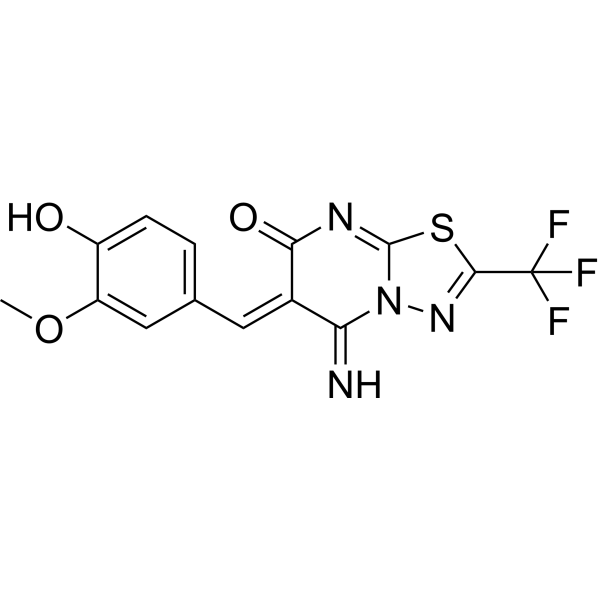
-
GP22258
SRR Human
Serine Racemase Human Recombinant

-
GP22260
ST3GAL5 Human
ST3 Beta-Galactoside Alpha-2,3-Sialyltransferase 5 Human Recombinant

-
GP22261
ST6GAL1 Human
ST6 Beta-Galactosamide Alpha-2,6-Sialyltranferase 1 Human Recombinant

-
GP22262
ST6GAL1 Human, sf9
ST6 Beta-Galactosamide Alpha-2,6-Sialyltranferase 1, sf9 Human Recombinant

-
GP26181
ST6GALNAC5 Human
ST6GALNAC5 produced in Sf9 Baculovirus cells is a single, glycosylated polypeptide chain containing 316 amino acids (30-336a

-
GP22263
Staphylokinase
Staphylokinase Recombinant

-
GP22625
STAT1 Human
Signal Transducer and Activator of Transcription 1 Human Recombinant

-
GP22626
STAT3 Human
Signal Transducer and Activator of Transcription 3 Human Recombinant

-
GP26197
STK11 Human
STK11 Human Recombinant produced in E

-
GP22628
STK16 Human
Serine/Threonine Kinase 16 Human Recombinant

-
GP22629
STK17B Human
Serine/Threonine Kinase 17B Human Recombinant

-
GP22627
STK3 Human
Serine/Threonine Kinase 3 Human Recombinant

-
GP22630
Stratifin Human
Tyr-3/Trp- 5 Monooxygenase Activation Protein Sigma Human Recombinant

-
GP22264
Streptokinase
链激酶是一种细菌来源的蛋白质和纤溶酶原激活剂。

-
GP22265
STYX Human
Serine/Threonine/Tyrosine Interacting Protein Human Recombinant

-
GP22266
STYX Human (26-223)
Serine/Threonine/Tyrosine Interacting Protein (26-223 a.a.) Human Recombinant

-
GP22267
SULT1A2 Human
Sulfotransferase Family, Cytosolic, 1A, Member 2 Human Recombinant

-
GP22268
SULT1B1 Human
Sulfotransferase Family, Cytosolic, 1B, Member 1 Human Recombinant

-
GP22269
SULT1C2 Human
Sulfotransferase Family, Cytosolic 1C, Member 2 Human Recombinant

-
GP22270
SULT1C4 Human
Sulfotransferase Family, Cytosolic 1C, Member 4 Human Recombinant

-
GP22271
SULT1E1 Human
Estrogen Sulfotransferase Human Recombinant

-
GP22272
SULT2A1 Human
Sulfotransferase Family, Cytosolic, 2A, Member 1 Human Recombinant

-
GP22273
SULT2B1 Human
Sulfotransferase Family, Cytosolic, 2B, Member 1 Human Recombinant

-
GP24749
SUMF1 Human
Sulfatase Modifying Factor 1 Human Recombinant

-
GP26348
SUMF1 Human, Sf9
SUMF1 produced in Sf9 Insect cells is a single, glycosylated polypeptide chain containing 347 amino acids (34-374

-
GP22274
SUOX Human
Sulfite Oxidase Human Recombinant

-
GP22275
SURA E.Coli
Chaperone SURA E.Coli Recombinant

-
GP22631
SYK Human
Spleen Tyrosine Kinase Human Recombinant

-
GC50353
T 26c disodium salt
A selective inhibitor of MMP-13
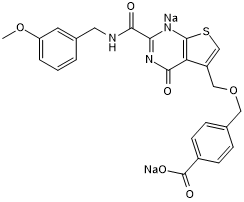
-
GP22276
T4 DNA
T4 DNA Ligase Recombinant

-
GP22278
TAF10 Human
TAF10 RNA Polymerase II Human Recombinant

-
GP22277
TAF9 Human
TAF9 Recombinant Human

-
GP22279
TALDO1 Human
Transaldolase Human Recombinant

-
GC50189
TAPI 0
TAPI 0 是一种 TACE(TNF-α 转化酶;ADAM17)抑制剂,IC50 为 100 nM。
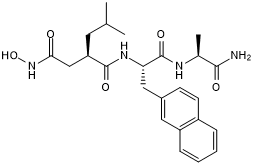
-
GP22280
Taq Plus DNA
Taq Plus DNA Polymerase Recombinant

-
GP22281
TaqDNA
Taq DNA 聚合酶重组

-
GP22282
TARS Human
Threonyl-tRNA Synthetase Human Recombinant

-
GP22283
TARS Human, Sf9
Threonyl-tRNA Synthetase Human Recombinant, Sf9

-
GC62482
TAS-119
TAS-119 是一种有效的,选择性的,具有口服活性的 Aurora A 抑制剂,IC50 为 1.0 nM。TAS-119 对 Aurora A 的选择性高于其他蛋白激酶,包括 Aurora B (IC50 为 95 nM)。TAS-119 具有有效的抗肿瘤活性。
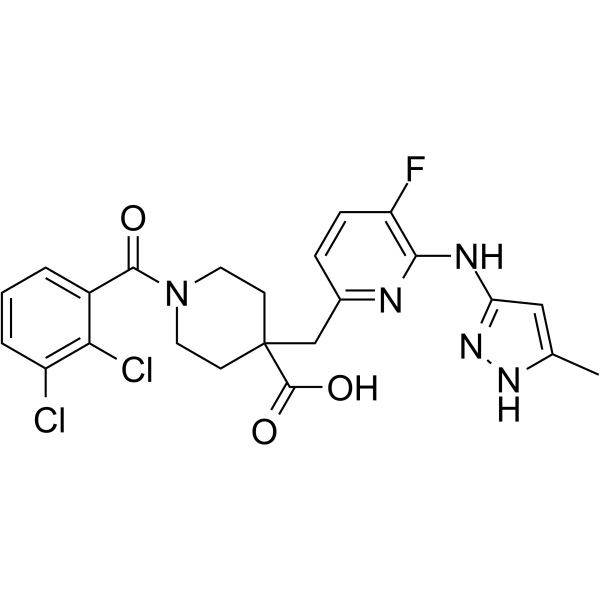
-
GP22284
TATDN3 Human
TatD DNase Domain Containing 3 Human Recombinant

-
GC62191
TD52
A derivative of erlotinib
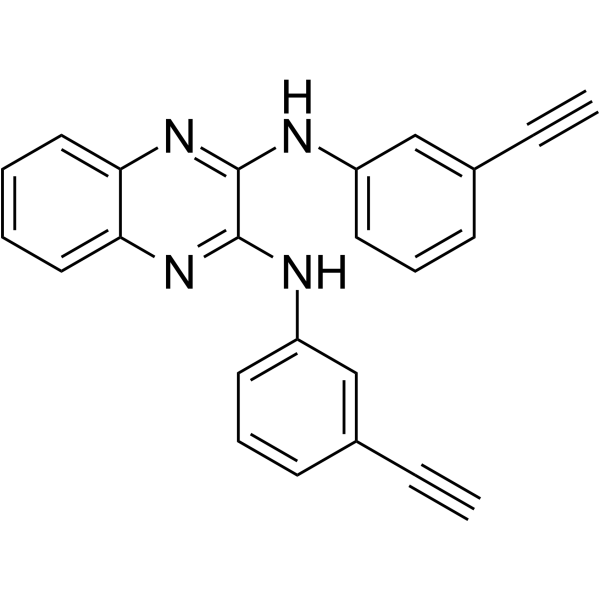
-
GC64936
TD52 dihydrochloride
A derivative of erlotinib
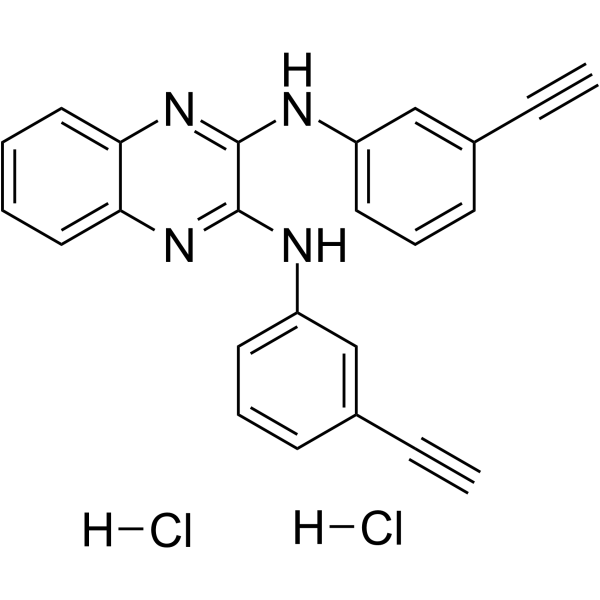
-
GP22285
TDG Human
Thymine-DNA Glycosylase Human Recombinant

-
GP22286
TDO2 Human
Tryptophan 2,3-Dioxygenase Human Recombinant

-
GP22287
TDP1 Human
Tyrosyl-DNA Phosphodiesterase 1 Human Recombinant

-
GP22288
TDP1 Human, Sf9
Tyrosyl-DNA Phosphodiesterase 1 Human Recombinant, Sf9

-
GP22289
TDP2 Human
Tyrosyl-DNA Phosphodiesterase 2 Human Recombinant

-
GP22632
TEK Human
TEK Tyrosine Kinase Endothelial Human Recombinant

-
GP22634
TEK Human Fc
TEK Tyrosine Kinase Endothelial Fc Chimera Human Recombinant





